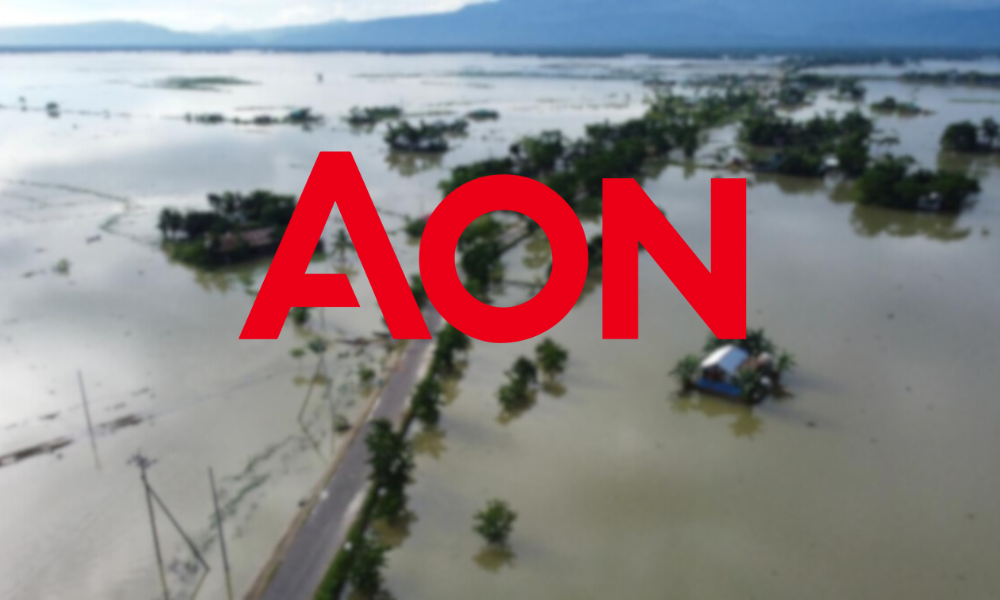The report aims to assist businesses in making informed decisions to navigate volatility and bolster resilience.
According to the report, a staggering 398 natural disaster events occurred globally in 2023, resulting in an economic loss of $380 billion. This figure marks a notable increase from the previous year’s loss of $355 billion, driven primarily by significant earthquakes and relentless severe convective storms (SCS) in the United States and Europe. These events collectively exceeded the 21st-century average by 22 percent.
In the Asia Pacific region, economic losses amounted to $65 billion, primarily attributed to floods in China and drought in India. Despite this significant financial toll, the total losses in the region were 48 percent lower than the 21st-century average.
Alarmingly, the ‘protection gap,’ which indicates the proportion of total losses left uninsured, reached a staggering 91% in the Asia Pacific region. This means that only a mere 9% of economic losses, totaling $6 billion, were covered by insurance—a figure notably below the 21st-century average of $15 billion.
The report underscores the urgent need to expand insurance coverage in the region to mitigate the devastating impact of natural disasters and enhance financial resilience among affected communities.
George Attard, CEO of Reinsurance Solutions for Aon’s Asia Pacific region, said: “The findings from Aon’s 2023 Global Risk Management Survey for Asia Pacific demonstrate that although climate change is not featured in the top ten, it directly impacts four of the top ten risks for businesses, that is business interruption, rapidly changing market trends, supply/chain distribution failure and regulatory or legislative changes. With climate driving new extreme weather records, businesses increasingly need to quantify and address the direct and indirect impact of climate risk.”
He continued: “Businesses must therefore leverage advanced analytics and experts to help analyse climate trends and make better decisions to address risks and increase the resiliency of their operations, workforces and the communities they impact.”
Flooding remains a recurring threat
The 2024 Climate and Catastrophe Insight report reveals that flooding remained a recurring threat in Asia Pacific, with annual losses having exceeded USD 30 billion every year since 2010. Flood losses overall proved to be the costliest peril for the fourth consecutive year, accounting for more than 64 percent of the loss total in 2023. About half of the Asia Pacific losses were related to flooding in China, which resulted in more than USD 32 billion economic losses and USD 1.4 billion of insured losses. Many places saw significant flooding and record rainfall events in 2023, including Hong Kong, South Korea, India, and Pakistan. The South Asia floods (Pakistan and India) resulted in nearly 2,900 fatalities. Much of the impact stemmed from regions where insurance penetration is very low.
Areas with high populations are generally better equipped for natural disasters through investment and potentially higher insurance take-up, but the flipside is that the significant urban growth can lead to unforeseen risks, especially when it comes to unprecedented weather events. In Hong Kong for example, typhoons are expected, and the associated risks are well understood. However, the 2023 rainfall-induced flash flooding was beyond average levels, exposing significant protection gaps.
With economic losses of nearly USD 13 billion and insured losses of USD 1.4 billion, tropical cyclone losses for Asia and Oceania were 53 percent, and 70 percent below their 21st-century averages. The number of fatalities from tropical cyclones stood relatively low for the second year in a row. This might be a result of improved disaster response and adaptation measures; however, many communities remain vulnerable in countries such as Myanmar, where at least 463 people died due to the impact of Cyclone Mocha in May.
Increasing number of events
The Asia Pacific region was rocked by several large earthquakes in 2023. Nearly 1,500 people were killed after a series of earthquakes in Afghanistan’s Herat Province in October, and more than 200,000 homes were damaged in China’s Gansu Province in December. Extreme heat was another unexpected peril in the Asian region in 2023. Parts of the region experienced prolonged periods of extreme temperatures in 2023. China endured a new national heat record with the temperature soaring to 52.2°C in July.
Notably, a multi-week-long heatwave impacted many countries in South and Southeastern Asia in April and May. Additional losses in billions of dollars resulted from drought conditions that affected China and India particularly.
Brad Weir, head of analytics of Reinsurance Solutions in Asia for Aon, said: “The 2024 Climate and Catastrophe Insight report highlights the vulnerability of the region to disasters and how the lack of insurance exacerbates business risks. With climate variability we see natural hazards impacting areas that in recent times may have been largely unaffected, meaning those communities are generally under-prepared and may not have adequate insurance in place. “
He added: “Closing the protection gap will therefore continue to pose a challenge but also a huge opportunity for Asia Pacific. There is a growing need for advanced climate modelling and risk assessment analytics for better disaster preparedness and planning to reduce risk, protect lives and promote resilience.”








